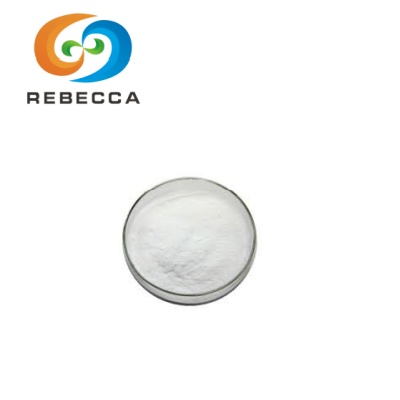Is alpha ketoglutarate an amino acid?
Alpha ketoglutarate is not an amino acid, but rather a crucial metabolic intermediate in cellular energy production. This molecule plays a pivotal role in the tricarboxylic acid (TCA) cycle, also known as the Krebs cycle. Alpha-ketoglutarate serves as a key player in amino acid metabolism, acting as a precursor for glutamate synthesis and participating in various transamination reactions. Its importance extends beyond energy production, influencing protein synthesis, nitrogen balance, and overall cellular health.
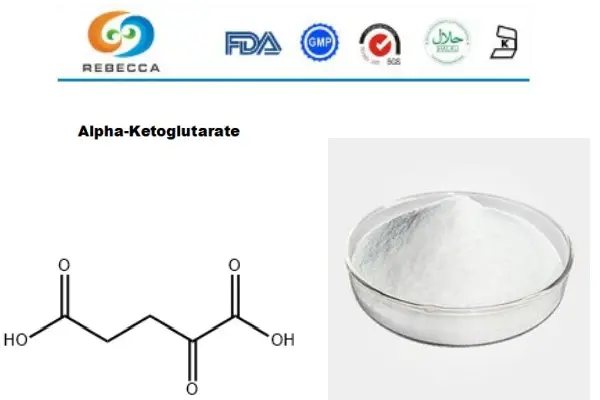
【English name】: Alpha-Ketoglutarate
【CAS No.】: 328-50-7
【Molecular Formula】: C5H6O5
【Active ingredients】: Alpha-Ketoglutarate
【Specification】: Alpha-Ketoglutarate 99%
【Appearance】: White to yellowish powder
α-Ketoglutarate is an intermediate in the (TCA) Cycle
TCA Cycle and Alpha-Ketoglutarate's Role
The tricarboxylic acid (TCA) cycle is a central metabolic pathway in aerobic organisms, occurring within the mitochondria of cells. This intricate series of chemical reactions is essential for generating energy through the oxidation of acetyl-CoA derived from carbohydrates, fats, and proteins. Alpha ketoglutarate occupies a critical position within this cycle, serving as both a substrate and a product in various reactions.
As the cycle progresses, alpha ketoglutarate is formed through the oxidative decarboxylation of isocitrate. It then undergoes further transformation, contributing to the production of succinyl-CoA, which continues through subsequent steps of the cycle. This process highlights the interconnected nature of cellular metabolism and the vital role that alpha-ketoglutarate plays in maintaining energy balance.
How α-Ketoglutarate Supports Energy Production in Cells
Alpha ketoglutarate's contribution to cellular energy production extends beyond its role as a TCA cycle intermediate. This molecule serves as a substrate for alpha-ketoglutarate dehydrogenase, an enzyme complex that catalyzes its conversion to succinyl-CoA. This reaction is coupled with the reduction of NAD+ to NADH, a crucial electron carrier in the electron transport chain.
By facilitating the production of NADH, alpha ketoglutarate indirectly supports the generation of ATP, the primary energy currency of cells. This process underscores the molecule's significance in maintaining cellular energy homeostasis and supporting various energy-dependent processes throughout the body.
Comparing α-Ketoglutarate to Other TCA Cycle Intermediates
While all TCA cycle intermediates play important roles, alpha ketoglutarate stands out due to its multifaceted functions. Unlike other intermediates such as citrate or succinate, alpha ketoglutarate serves as a direct link between carbohydrate metabolism and amino acid metabolism. This unique position allows it to influence a broader range of cellular processes beyond energy production.
Additionally, its ability to act as an anaplerotic molecule, replenishing TCA cycle intermediates, sets it apart from other components of the cycle. This property enables cells to maintain the cycle's function even when intermediates are withdrawn for other biosynthetic processes, ensuring the continuity of energy production and cellular metabolism.
Chemically, A Keto Acid
Exploring the Chemical Structure of Alpha-Ketoglutarate
Alpha ketoglutarate belongs to a class of compounds known as keto acids. Its chemical structure consists of a five-carbon chain with two carboxyl groups (-COOH) at the first and fifth carbon positions and a ketone group (C=O) at the second carbon. This unique arrangement gives alpha ketoglutarate its distinctive properties and reactivity in biochemical processes.
The presence of the ketone group is particularly significant, as it allows alpha-ketoglutarate to participate in a wide range of reactions, including transamination and oxidative decarboxylation. The carboxyl groups contribute to the molecule's acidity and its ability to form salts and esters, further expanding its biochemical versatility.
Keto Acids vs Amino Acids: Key Differences Explained
While keto acids and amino acids share some structural similarities, they differ in their functional groups and biochemical roles. Amino acids contain an amino group (-NH2) and a carboxyl group (-COOH) attached to the same carbon atom, known as the alpha carbon. In contrast, keto acids like alpha ketoglutarate feature a ketone group in place of the amino group.
This structural difference results in distinct chemical properties and biological functions. Amino acids serve as the building blocks of proteins and participate in various metabolic pathways. Keto acids, on the other hand, often act as intermediates in metabolic processes and can serve as precursors for amino acid synthesis through transamination reactions.
Alpha-Ketoglutarate's Reactivity and Biochemical Properties
The chemical structure of alpha ketoglutarate endows it with unique reactivity and biochemical properties. Its ketone group readily undergoes reduction reactions, allowing it to accept electrons and protons in various metabolic processes. This property is crucial for its role in the TCA cycle and its ability to participate in redox reactions within cells.
Alpha-ketoglutarate's carboxyl groups contribute to its ability to form complexes with metal ions, a property that is relevant to its role in certain enzymatic reactions. Additionally, the molecule's structure allows it to act as both an electron acceptor and donor in different biochemical contexts, further highlighting its versatility in cellular metabolism.
A Central Role In Amino Acid Metabolism
Alpha-Ketoglutarate as a Precursor for Glutamate Synthesis
Alpha ketoglutarate serves as a direct precursor for the synthesis of glutamate, a non-essential amino acid with numerous important functions in the body. The conversion of alpha-ketoglutarate to glutamate occurs through a process called reductive amination, catalyzed by the enzyme glutamate dehydrogenase. This reaction involves the incorporation of an amino group onto the alpha-ketoglutarate molecule, resulting in the formation of glutamate.
The ability of alpha ketoglutarate to act as a glutamate precursor is crucial for maintaining adequate levels of this important amino acid in the body. Glutamate plays roles in neurotransmission, protein synthesis, and as a metabolic fuel for certain tissues, underscoring the importance of alpha-ketoglutarate in supporting these vital functions.
Transamination Reactions Involving Alpha-Ketoglutarate
Alpha ketoglutarate participates in numerous transamination reactions, which involve the transfer of amino groups between amino acids and keto acids. These reactions are catalyzed by a class of enzymes called aminotransferases or transaminases. In these processes, it acts as an amino group acceptor, becoming converted to glutamate in the process.
Transamination reactions facilitated by alpha ketoglutarate are essential for the synthesis and breakdown of various amino acids. This process allows for the interconversion of amino acids and their corresponding keto acids, enabling cells to maintain amino acid balance and support protein synthesis and degradation as needed.
Impact on Protein Synthesis and Nitrogen Balance
Through its involvement in amino acid metabolism, alpha ketoglutarate exerts a significant influence on protein synthesis and overall nitrogen balance in the body. By serving as a precursor for glutamate and participating in transamination reactions, it helps maintain the pool of available amino acids for protein synthesis.
Additionally, it plays a role in the urea cycle, where it indirectly supports the removal of excess nitrogen from the body and contributes to maintaining proper nitrogen balance. This function is crucial for preventing the accumulation of toxic ammonia and ensuring the efficient utilization of nitrogen-containing compounds in the body.
Alpha ketoglutarate, while not an amino acid itself, plays a pivotal role in cellular metabolism and amino acid synthesis. Its importance in the TCA cycle, energy production, and amino acid metabolism underscores its significance in maintaining overall cellular health and function. As research continues to uncover new aspects of biological roles, its potential applications in nutrition and health supplements continue to expand, offering promising avenues for supporting metabolic health and cellular function.
Wholesale Alpha Ketoglutarate Supplier
Shaanxi Rebeccia is a leading wholesale supplier of high-quality alpha ketoglutarate. Our production base is equipped with internationally leading extraction, separation, and purification equipment, and operates in strict compliance with GMP and ISO standards. From raw material procurement to finished product delivery, every step undergoes rigorous quality control to ensure the safety and efficacy of our products. We offer alpha-ketoglutarate with the following specification:99% purity, available as a white to yellowish powder. For inquiries about our health supplement ingredients, contact us at information@sxrebecca.com.
References
- Krebs, H. A. (1940). The citric acid cycle and the Szent-Györgyi cycle in pigeon breast muscle. Biochemical Journal, 34(5), 775-779.
- Owen, O. E., Kalhan, S. C., & Hanson, R. W. (2002). The key role of anaplerosis and cataplerosis for citric acid cycle function. Journal of Biological Chemistry, 277(34), 30409-30412.
- Wu, N., Yang, M., Gaur, U., Xu, H., Yao, Y., & Li, D. (2016). Alpha-Ketoglutarate: Physiological Functions and Applications. Biomolecules & Therapeutics, 24(1), 1-8.
- Zdzisińska, B., Żurek, A., & Kandefer-Szerszeń, M. (2017). Alpha-Ketoglutarate as a Molecule with Pleiotropic Activity: Well-Known and Novel Possibilities of Therapeutic Use. Archivum Immunologiae et Therapiae Experimentalis, 65(1), 21-36.
- Yelamanchi, S. D., Jayaram, S., Thomas, J. K., Gundimeda, S., Khan, A. A., Singhal, A., ... & Gowda, H. (2016). A pathway map of glutamate metabolism. Journal of Cell Communication and Signaling, 10(1), 69-75.
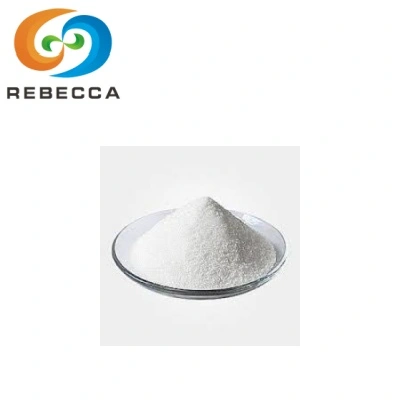

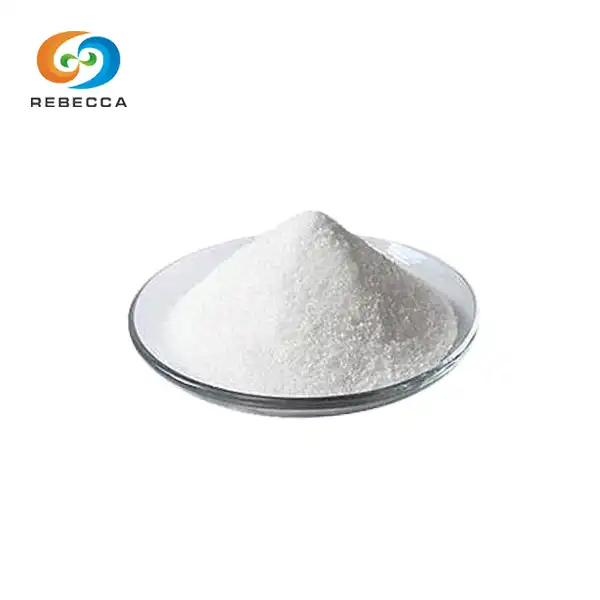

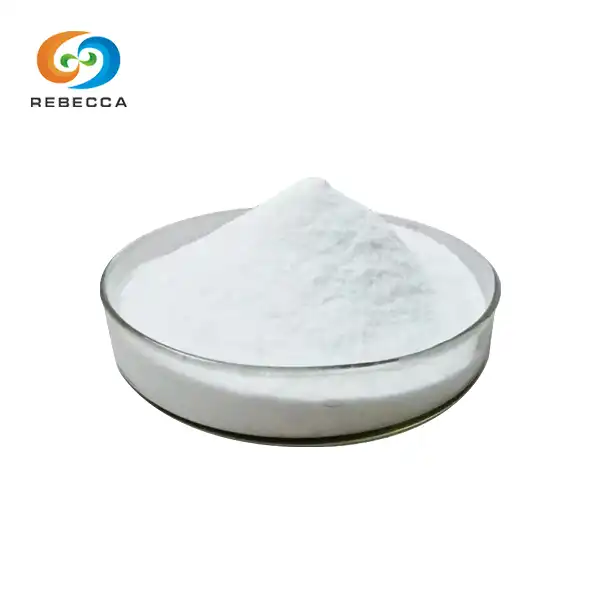
_1747205699273.webp)
_1730079799361.webp)
